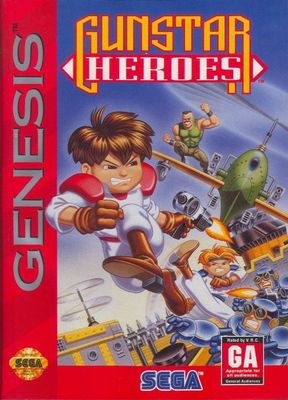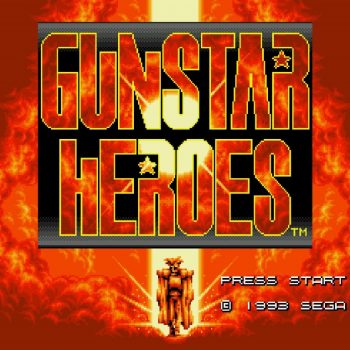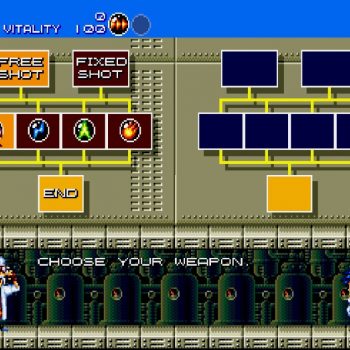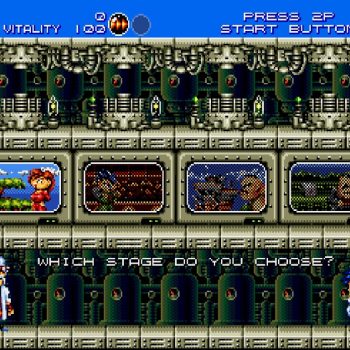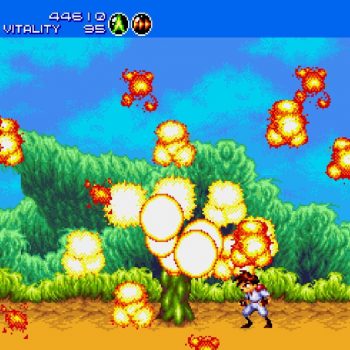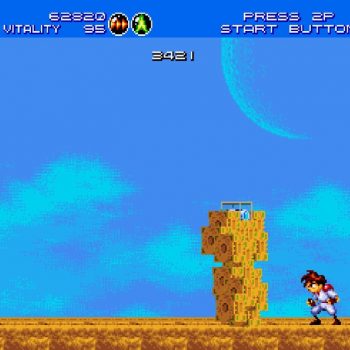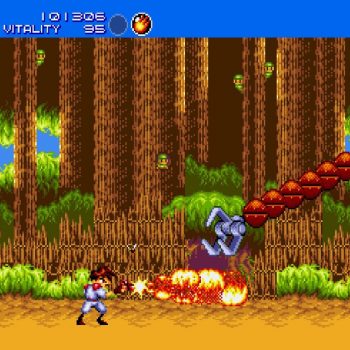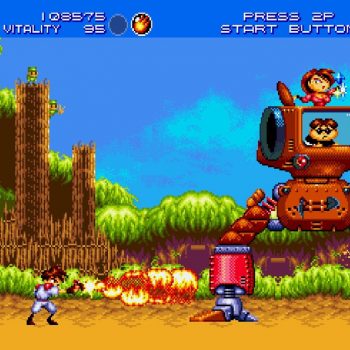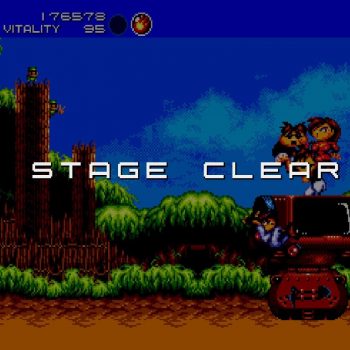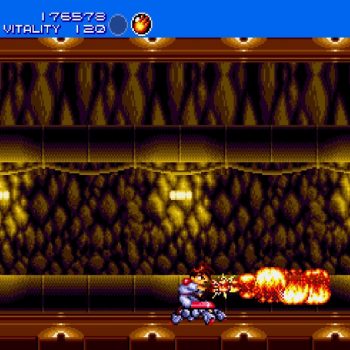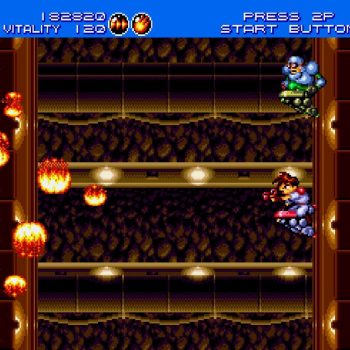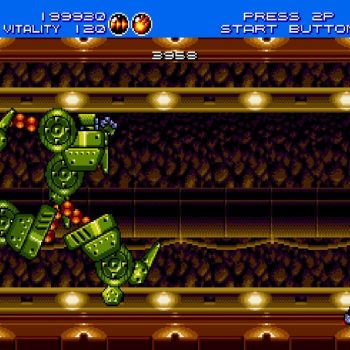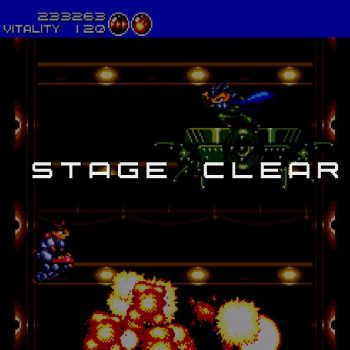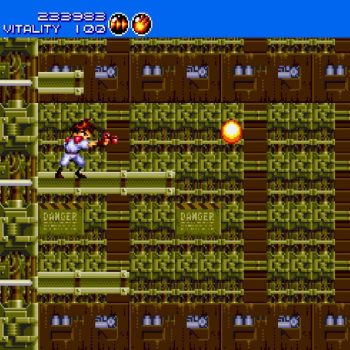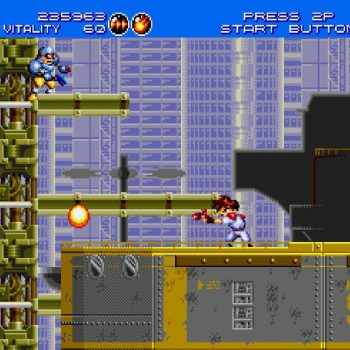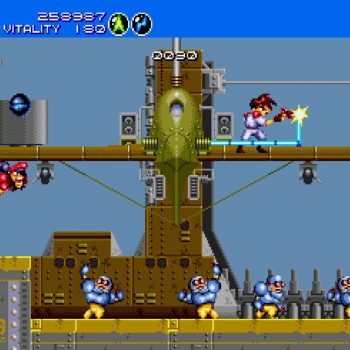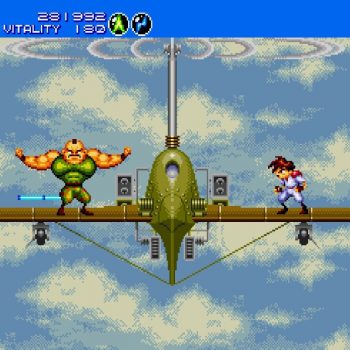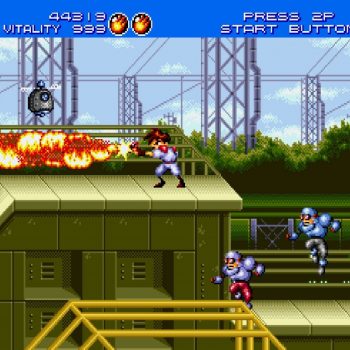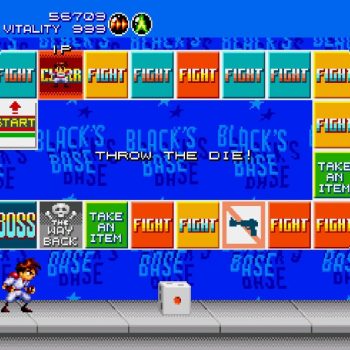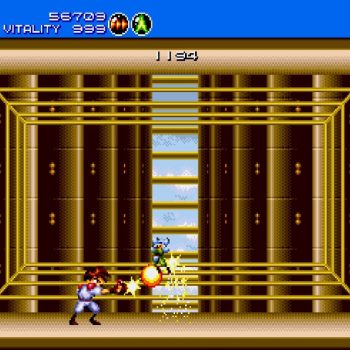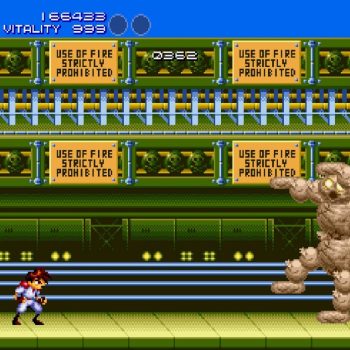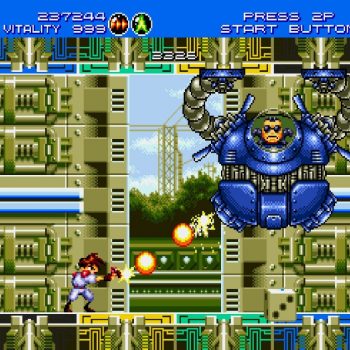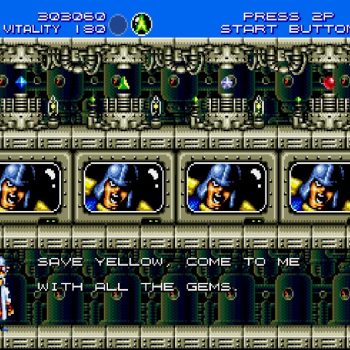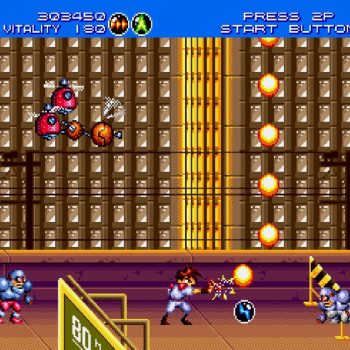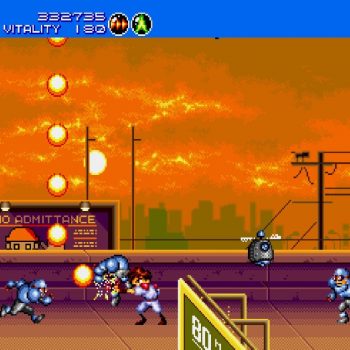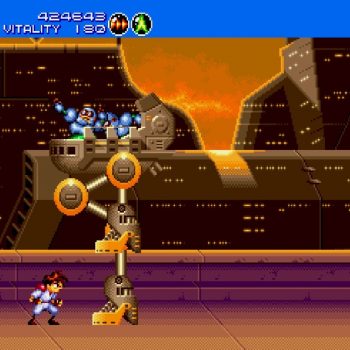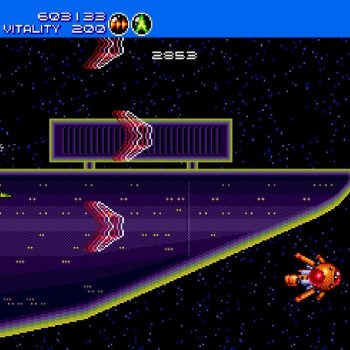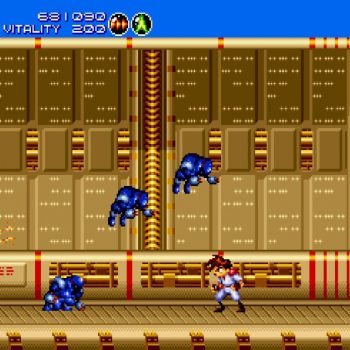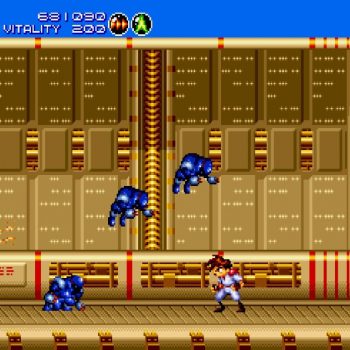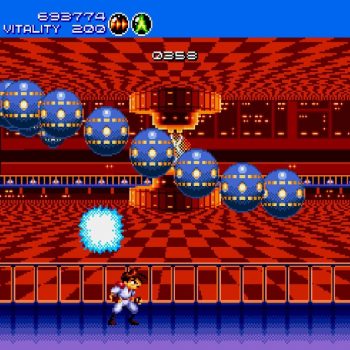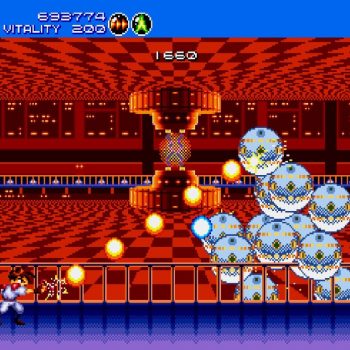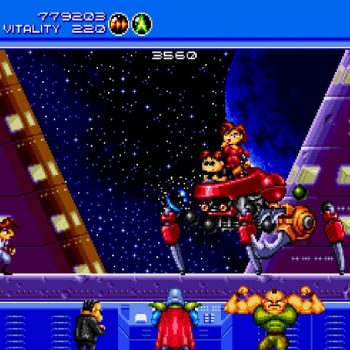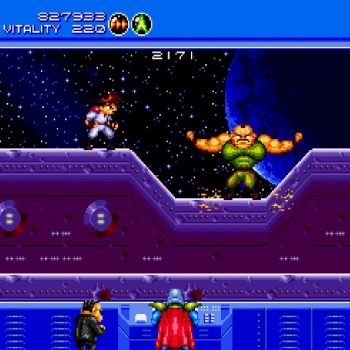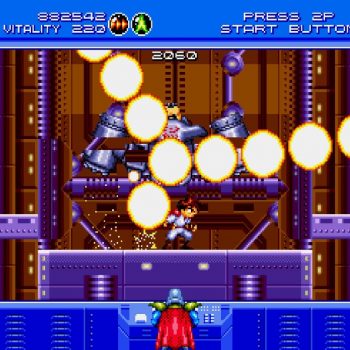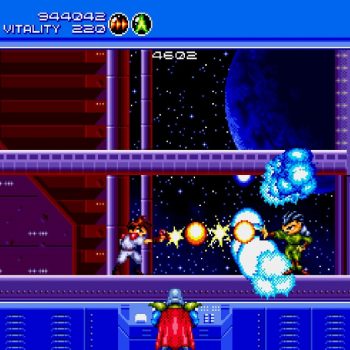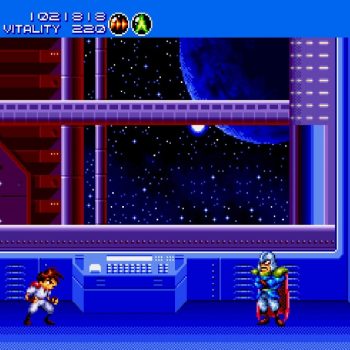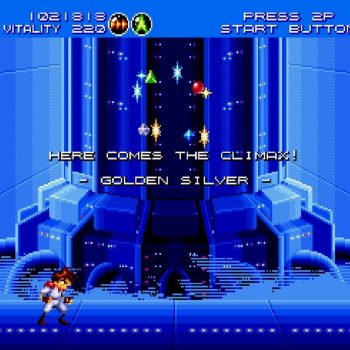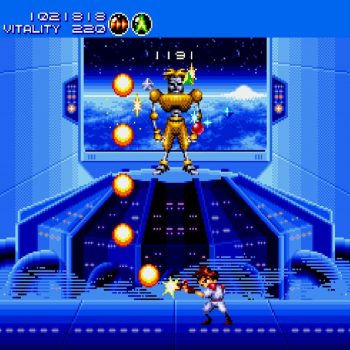Gunstar Heroes
Okay, I’m not sure where to begin with Gunstar Heroes. It’s widely considered one of the best games of the 16-bit era and one of the best on the Sega Genesis. It’s also one of the most critically acclaimed games of all-time period.
To get to the nuts and bolts of this game, let me just say it’s Contra on crack. However, it was the first title developed by Treasure, which was a group of devs who splintered off from Konami after the latter wanted to shutter the project.
I took pieces of the Gunstar Heroes Wikipedia entry to explain best how the game plays:
Gunstar Heroes is a run and gun game played from a side-scrolling perspective similar to Contra. The game can be played in single-player, or cooperatively with a partner. The players take on the role of Gunstar Red and Gunstar Blue as they battle with an evil empire for control over a set of powerful gems.
The game features seven stages, of which the first four can be tackled in any order. The stage formats vary; while some feature a typical left-to-right format, others have the player riding in a mine cart along walls, fighting enemies on a helicopter, or playing a board game. Completing a level grants the player an extension to their maximum health.
When starting a game, the player can choose either a free or fixed firing stance; the fixed stance immobilizes the character when shooting, while the free stance has the player move in the direction they are firing.
The player also has a choice of starting weapon. There are four shot types in the game: a homing shot, lightning blaster, flamethrower, and machine gun. Each weapon has its strengths and weaknesses, and can be swapped with others from item drops in each stage. The weapons can be combined with each other to produce unique shot types. For example, the homing shot can be combined with the machine gun to add a homing effect to the latter, or two lightning shots can be combined to create a more powerful lightning gun.
In addition to firing their weapon, the player characters can pull off a series of acrobatic maneuvers including jumping, sliding, and grabbing and throwing enemies.
If that seems like a mouthful, it is!
If you were ever a Contra fan, and I have high praise for Hard Corps on the Genesis (which appeared one year after, maybe as an answer?) then you will love this game.
However, the difficulty is, well, it’s a tough game! Your character and enemies have “vitality points” which makes it easy to see how much damage is being taken or inflicted, but at the end of the day, the boss battles can drone on, lasting forever as you chip away at cheapshot artists and bait-and-switch tactics where you believe you’ve won, only to be taken for another battle!
Gunstar Heroes feels a lot like Mega Man in ways too, with a stage selection screen for the first four levels – which can be played in any order. The final three are played in sequence.
When you get beyond the onslaught of enemies and explosions, you can appreciate the attention to detail in then cutting edge graphics, with many elements moving three-dimensionally despite the game being set on a 2D plane. It never once suffers from slowdown or stutter, and the pace is a breakneck speed in line with Sega’s “blast processor” marketing.
The only thing I didn’t much care for in this title was the departure from the side-scrolling platform shooting, as seen later in the game with a spaceship shooting segment that’s more on par with Defender than it is the Contra-inspired game play.
If you’re looking for an authentic arcade-style shooter challenge, Gunstar Heroes doesn’t disappoint. Even after all of these years it’s easy to see how Treasure’s first game was a huge hit.

